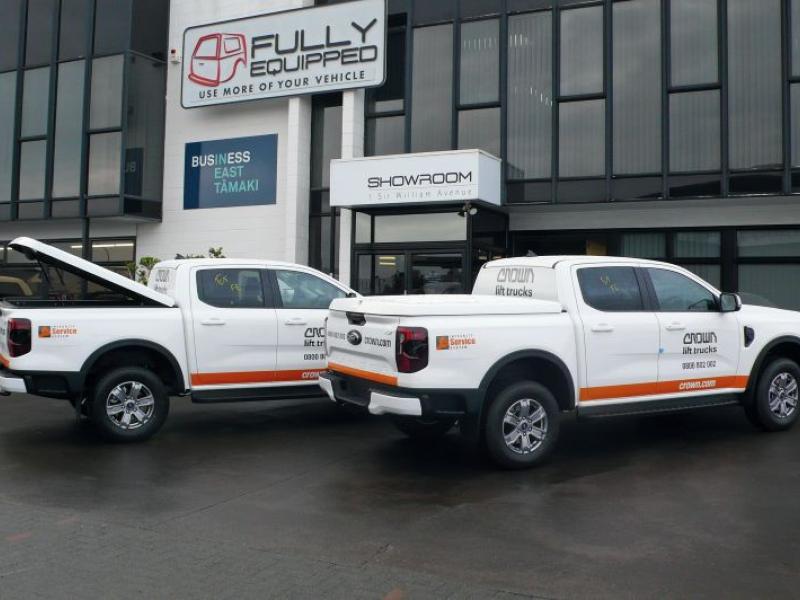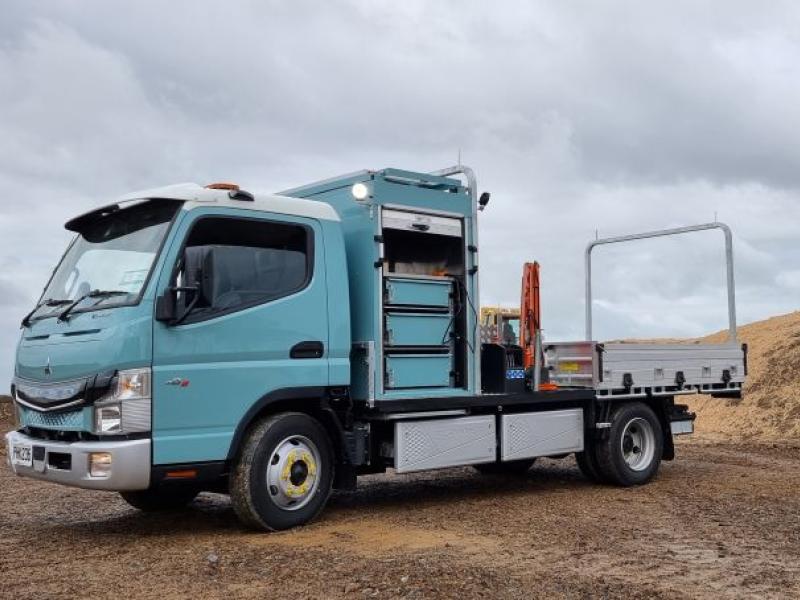|
The newly revised Mitsubishi Triton GLX does without the Super Select all-wheel-drive transmission found in the more upscale GLS version but John Oxley found this was not an issue on and off road. In some respects the Triton GLX manual is much better than the GLS auto, not least when it comes to really extreme off-road conditions, for there’s the distinct advantage of having lower overall gearing in the manual, plus more precise control – and the advantage of having more available torque, since the latest 133 kW 2.5-litre common rail diesel engine produces 407 Nm of torque in the manual models and 356 Nm in the automatics Mitsubishi also upped the size of the double cab Triton wellside length by 180 mm and depth by 55 mm, which not only brings it in line with its main opposition, but also improves the overall looks. Another big bonus with the latest Tritons is the inclusion of side and curtain airbags in addition to front airbags as well as an electronic stability programme which includes traction control. The Triton became the first utility in New Zealand to gain an ANCAP four-star safety rating at a time where the rest were languishing in the two-star arena. Mitsubishi has also upgraded the Triton with a three tonne towing capacity across the range. In addition the GLX was given the premium GLS Sport suspension package and wider alloy wheels with 245/70 R16 tyres, as well as wider wheel arch flares to cloth them. Other recent changes have included a brand-new front end with a large one-piece grille – the previous one was split – and new modern headlight clusters. Inside there’s a new instrument display, centre console and seat trims. The driver’s seats now has height-adjust as well as recline and fore-aft adjustment, offering more versatility and comfort for the driver, and there’s extra seat cushioning and bolstering. The interior on the test vehicle was trimmed in attractive shades of charcoal and beige on both seats and dashboard, and the dash design is clean and uncluttered. Those who like things simple will be happy to see that there are two normal gear levers, one for ordinary gear selection and the other for the transfer case, and this makes things much easier. You KNOW when it’s in low ratio because you can feel it select. The new seats make it much easier to get a comfortable driving position, coupled with tilt adjustment of the steering column, and the three-spoke urethane steering wheel has controls for the cruise control inset into the right-hand spoke. Other controls are simple and straightforward, with rotary controls for the heating and ventilation and a push-button for the aircon, but the ASC button, to switch off the stability programme when you’re in sand or mud, is less conveniently situated on the right of the steering column. Double cab utilities are becoming more and the vehicle of choice for families, often replacing ageing used station wagon 4WDs, and as such there’s more and more demand for comfort as well as the toughness and versatility inherent in the design. The Triton comes well equipped, with AM/FM radio with front-loader CD player, central locking, aircon, electric windows and mirrors, immobiliser, alloy wheels, ABS brakes with electronic brake distribution, and cruise control. There are four interior tie-down points, but none on the outside – and a tonneau cover is an option, as is the removable tow hitch fitted on the test vehicle. On the road the Triton gives a lively and agile drive in 2WD – within the confines of its cart-sprung rear axle – and it was only when we were really pressing on to put it through its paces that the stability programme intervened to keep things in line. But one of the most important things we’ve left to the end. It comes with a 10 year/160,000km powertrain warranty, a 5 year/130,000km new vehicle warrant, and 5 years’ roadside assistance. Specifications: Body type Double cab utility |
Engine Capacity 2477cc Through Life Cost Report The Through Life Cost Model is used for illustrative and indicative purposes only. FleetWorks and Adrenalin Publishing Limited accept no responsibility or liability should any costs indicated in the Through Life Cost Model change from those published. All residual values are based on an average of values achieved through Turners Auctions Limited sales for the previous 3 months from issue date.
|






